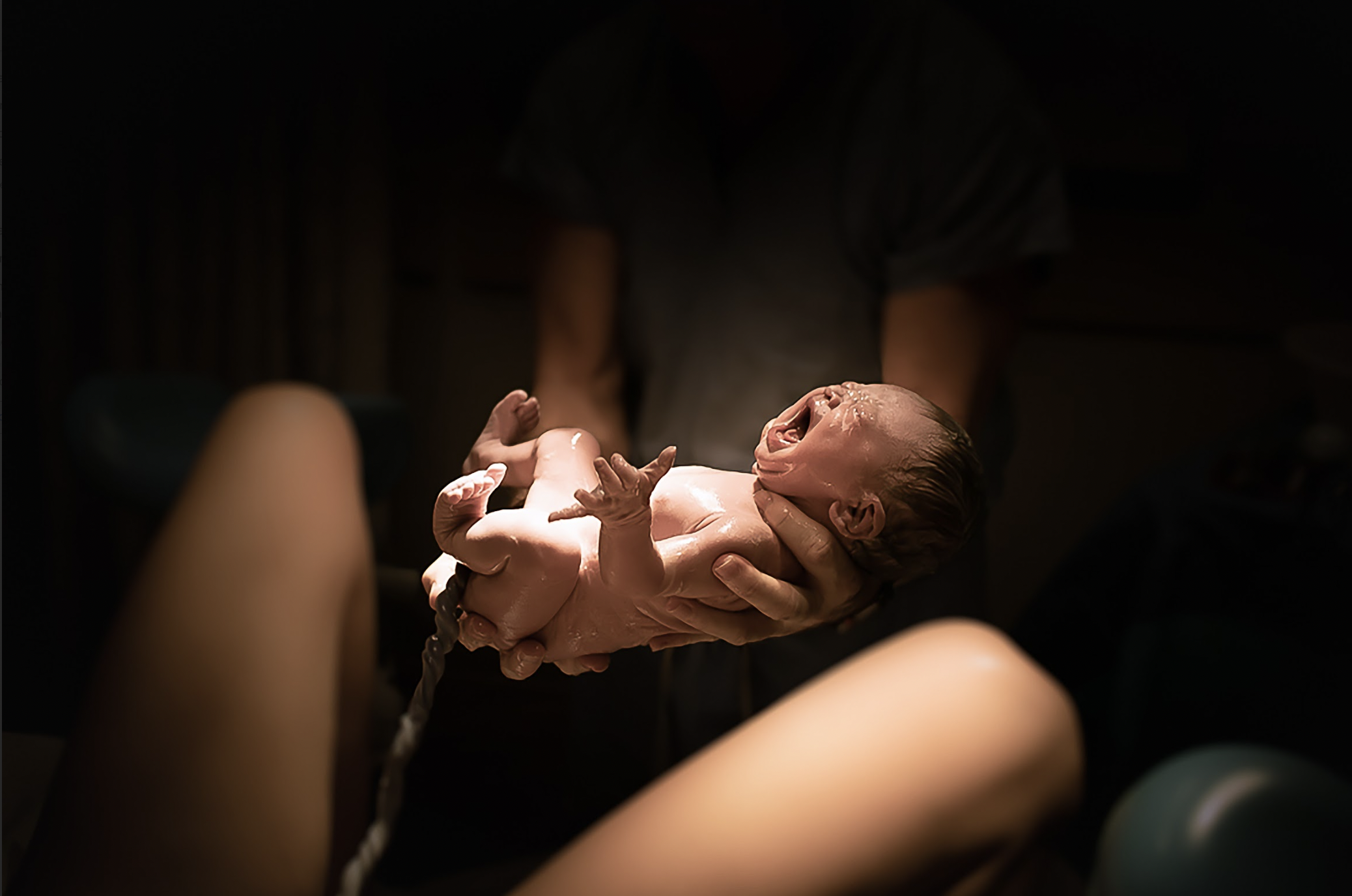Childbirth Facts: 4 Things You Didn't Know About Baby Delivery

Pregnant women spend countless hours in a childbirth class, meticulously crafting their birth plans and mentally preparing for the arrival of their little miracle. They learn about labour pain, breathing techniques, uterine contractions, and pushing strategies.
But what about the delivery day surprises that no one seems to mention? Buckle up, mamas-to-be, because this blog post is about to unveil four unexpected facts about natural childbirth that might leave you thinking, "Wait, what?"
Fact 1: The Engagement of the Baby's Head in the Birth Canal
In the United States, with a current caesarean section birth rate exceeding 32%, many expectant mothers focus heavily on vaginal birth and meticulously plan for vaginal delivery. Many moms eagerly await signs that labour is imminent. One such sign, often described as a lightening in the pelvis, is the baby "dropping" – or settling low into the birth canal in preparation for birth.
Here's the surprise for many first-time moms: the baby's head might not engage (settle low) until labour actually begins. While some women experience this "dropping" sensation weeks before, others might not feel it until contractions kick in.
However, this doesn't necessarily mean your baby isn't positioned correctly for a vaginal birth. If you want to find out more about fetal positioning, there are educational blogs online that you can refer to.
Your doctor can also easily check engagement during your prenatal appointments, ensuring everything is progressing smoothly for a healthy delivery, regardless of birth plan or potential medical interventions. So, take a deep breath! That baby bump might stay put a little longer, but rest assured, your body is working its magic behind the scenes to get ready for delivery day, and your maternity care team is there to support you every step of the way.
Fact 2: Not All Deliveries Involve Water-Breaking
Hollywood loves a dramatic water break scene, the gush of amniotic fluid, the startled gasps, and the immediate dash to the hospital. But in the real world of childbirth, things often unfold differently. Here's the key takeaway: water breaking isn't always the clear-cut sign of labour that movies make it seem. This scenario is especially true for women considering alternative birthing options like birthing centres or even at-home water birth (where fetal monitoring and labour pains become even more crucial).
The truth is, water breaking can happen in several ways:
The Gush
It can indeed be a dramatic event, just like in the movies, with a noticeable release of fluid.

The Slow Leak
Sometimes, the amniotic sac ruptures with a small trickle instead of a big gush. You might mistake it for increased vaginal discharge or even extra blood.
Doctor Intervention
In some cases, if labour hasn't progressed after a certain point, your doctor might choose to artificially rupture the membranes to help things move along.
No matter how your water breaks (or if it doesn't at all!), it's essential to be aware of the fluid's colour and consistency. If it's clear or pale yellow, that's usually normal. However, any greenish tinge or foul odour could indicate a potential infection, so be sure to mention it to your doctor right away.
The way your water breaks (or doesn't) doesn't necessarily predict the course of your labour. Focus on the amazing journey your body is about to embark on and trust your healthcare team, whether in a hospital, birthing centre, or even a home birth (depending on your birthing plan), to guide you through every step of the way.
Fact 3: Your Body Might Expel More Than The Baby
For a pregnant woman, the focus during pregnancy is often on the beautiful baby bump and the miracle of new life growing within. While vaginal delivery is the most common way to deliver a baby, there are some surprising realities that childbirth classes might not always emphasize. Here's the truth, new mom: during active labour, when contractions are strong and frequent, your body might expel more than just the baby.
Due to the intense pressure and muscle use during live births, it's completely normal to experience involuntary bowel movements. This event can happen as your body works hard to push the baby through the birth canal. The good news? Your skilled healthcare provider and the hospital staff are prepared for this, and they'll handle everything discreetly and hygienically. There's no need to feel embarrassed – it's simply a natural part of the birthing process.
Your body's incredible work shouldn't be overshadowed by focusing solely on the baby. Remember, a healthy vaginal delivery is a team effort – your body works efficiently, and your medical team provides support throughout the process. While some interventions, like forceps or vacuum, might be used to assist with delivery in certain situations, minimizing maternal deaths and infant mortality and ensuring a smooth vaginal opening for the baby remains a top priority.
Fact 4: Newborn Babies Often Have a Cone-Shaped Head
During a vaginal birth, your baby's head cleverly moulds to fit through the birth canal. This situation isn't a cause for alarm! This temporary change in shape, sometimes referred to as moulding, allows for a smoother passage for your little one. This cone-shaped head will naturally round out beautifully within a few days, leaving no trace of its remarkable journey earthside.
Even more fascinating is the role of the placenta, the incredible organ that has sustained your baby throughout pregnancy. After the delivery of your newborn, the placenta, still connected by the umbilical cord, is also expelled from your body. This feat highlights the incredible teamwork between the human body and the placenta to ensure your baby's health.
Prioritizing your own maternal health throughout this incredible journey is critical. Listen to your body, trust your healthcare provider, and embrace the unique postpartum experiences that await you.
Final Thoughts
Delivery day is a whirlwind of emotions – excitement, anticipation, maybe even a touch of fear. But remember, the unexpected is often part of the beautiful surprise! While childbirth classes are fantastic resources, these surprising facts serve as a gentle reminder that your delivery journey might unfold differently than what you see in movies or read in textbooks.
Trust your body's incredible capabilities, and more importantly, enjoy the miracle of bringing new life into the world. After all, motherhood is an adventure – and it all starts with that very first surprising hello from your precious newborn.






